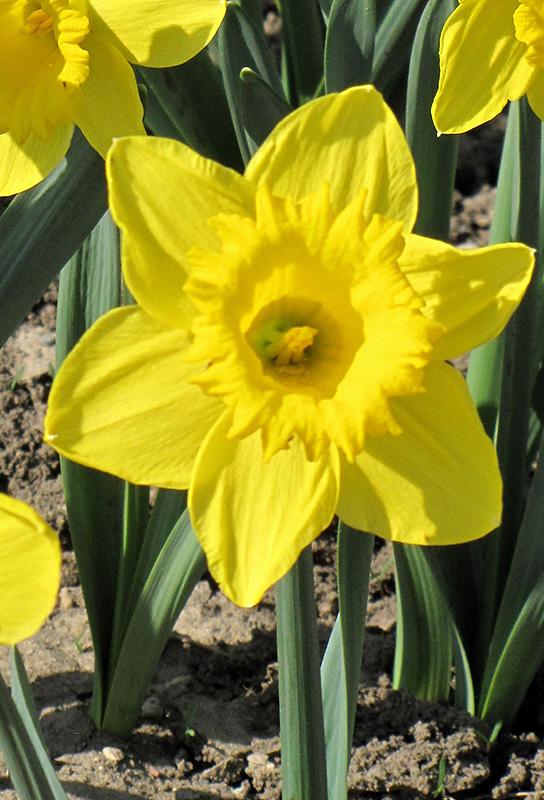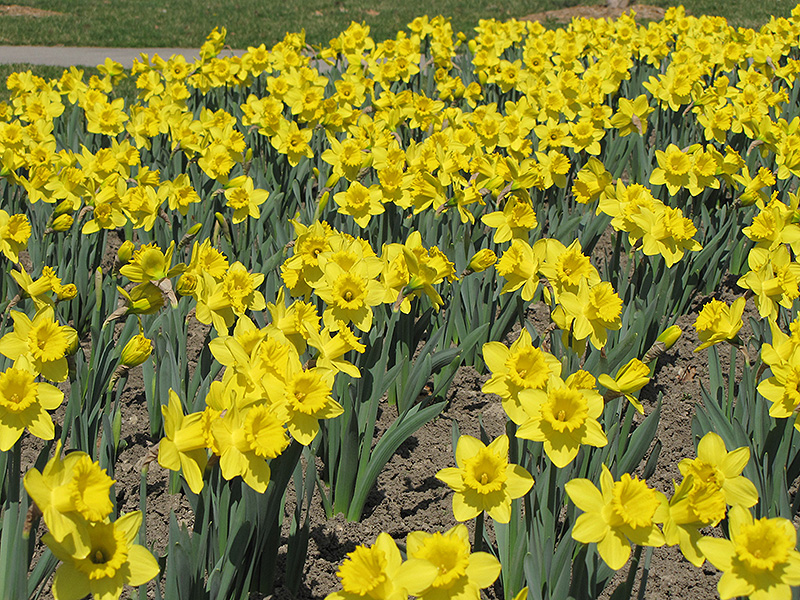King Alfred Daffodil
Narcissus 'King Alfred'
Plant Height: 18 inches
Flower Height: 24 inches
Spacing: 10 inches
Sunlight:
![]()
![]()
Hardiness Zone: 3
Description:
A gorgeous addition to any garden, one of the largest of all the trumpet daffodils; flowers are a lovely golden-yellow with bright yellow cups and are very showy in the garden or containers
Ornamental Features
King Alfred Daffodil has masses of beautiful lightly-scented yellow trumpet-shaped flowers with yellow centers at the ends of the stems in mid spring, which are most effective when planted in groupings. The flowers are excellent for cutting. Its grassy leaves remain dark green in colour throughout the season.
Landscape Attributes
King Alfred Daffodil is an herbaceous perennial with an upright spreading habit of growth. Its relatively fine texture sets it apart from other garden plants with less refined foliage.
This is a relatively low maintenance plant, and is best cleaned up in early spring before it resumes active growth for the season. Deer don't particularly care for this plant and will usually leave it alone in favor of tastier treats. It has no significant negative characteristics.
King Alfred Daffodil is recommended for the following landscape applications;
- Mass Planting
- General Garden Use
- Naturalizing And Woodland Gardens
Planting & Growing
King Alfred Daffodil will grow to be about 18 inches tall at maturity extending to 24 inches tall with the flowers, with a spread of 18 inches. When grown in masses or used as a bedding plant, individual plants should be spaced approximately 10 inches apart. It grows at a medium rate, and under ideal conditions can be expected to live for approximately 10 years. As an herbaceous perennial, this plant will usually die back to the crown each winter, and will regrow from the base each spring. Be careful not to disturb the crown in late winter when it may not be readily seen! As this plant tends to go dormant in summer, it is best interplanted with late-season bloomers to hide the dying foliage.
This plant does best in full sun to partial shade. It does best in average to evenly moist conditions, but will not tolerate standing water. It is not particular as to soil type or pH. It is somewhat tolerant of urban pollution. Consider applying a thick mulch around the root zone in winter to protect it in exposed locations or colder microclimates. This particular variety is an interspecific hybrid. It can be propagated by multiplication of the underground bulbs; however, as a cultivated variety, be aware that it may be subject to certain restrictions or prohibitions on propagation.


